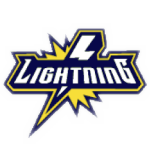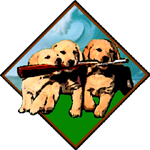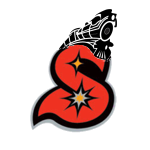Play 162 games + any playoff games
Document and input each player’s statistics to the website within one week of completion of a series. Don't fall behind! When kept current, it's easy to keep up.
Be available for the annual draft held the second Friday of March. This can be done in person or telecommute.
1. Better head-to-head record
2. Better record within the division
Two qualified teams in division: Team A is the team with the best overall record.
Three qualified teams in division: Divisional Round needed between the second and third seed. The top seed gets a bye. The second seed is Team A. The third seed is Team B.
Four qualified teams in division: Divisional Round will have the top seed play the fourth seed. The top seed is Team A. The fourth seed is Team B. The second and third seeds will also play. The second seed is Team A. The third seed is Team B. Winners of these rounds will move to the Divisional Championship Series. The highest seed will be Team A.
In the World Series if both teams have the same record, tie-breakers for Team A are:
1. Better head-to-head record
2. Roll of the 20-side dice. Higher number wins
Stadiums may only have dimensions set as minimum to 1 and maximum to 19. 0s and 20s are not allowed.
After the World Series is completed and before the draft, each team is granted one opportunity each year to set their home stadium dimensions. Teams may only change their stadium’s dimensions by 20% for each rating a year. For example, a stadium with dimensions of 10-10-10-10 can change their stadium to 6-10-14-10, 6 and 14 being the maximum change. In this example, a change to 3-19-19-10 would not be allowed.
A ballpark's dimensions shall be limited to a difference of 10 between right-handed and left-handed hitter sides of the stadium. For example, a stadium with left-handed Home Runs set to 15 must have a minimum of right-handed Home Runs set to 5. The same applies to singles.
Teams with new managers are allowed to initially set their dimensions to any ratings they wish, within the difference of 10 rule. The year after, they are subject to the 20% rule.
Weather Effects: Teams can specify if their stadium has weather effects after the World Series is completed and before the draft. Weather effects may not exceed 20% of the base dimensions when rolled before every game.
Non in-game issues are also addressed to the league as a whole. Decisions are discussed and resolved via majority league vote. The league interacts quite often. If you notice an issue, bring it up!
The goal here is to have fun and enjoy this wonderful game!
Every team may use up to 26 players on their active roster. The rest of the roster will be sent down to the minors. A team must have at least one player eligible to play at every position to start a game. If all players eligible for a single position become injured, the game may continue with a chosen player off the bench to play that position with a rating of 5e99(+5).
Games in September allow for a 40-man active roster. Managers must submit their 40-man roster if they have added players during the season via trade.
Note: If multiple players become injured during play for at least one further game, the manager must promote a player from the minors who can play that position. If the manager has no other players who can play that position, they must immediately seek out a trade with another team to satisfy the requirement.
All unowned cards that have at least 130 At Bats or 50 Innings Pitched are eligible to be drafted. Left-handed relievers who have at least 40 Innings Pitched are also eligible.
Draft order is determined by the team with the worst overall record from the previous year getting the first pick for each round incrementing by that previous year's winning percentage. All non-playoff teams are slotted ahead of playoff teams, even if they had a worst overall regular season record. Playoff teams are determined by which round they are eliminated. Earlier round eliminations will pick first, sorted by regular season winning percentage. For example: The winner of the World Series picks last. The World Series runner-up always picks second to last.
Draft picks can be traded and teams that own those particular draft picks may select for their team in that slot. The order is determined on the website before the draft.
Once the Draft and the Supplimental draft are over, all teams must not have more then 40 carded and non-carded players on their roster.
Note: Supplimental draft picks can not be traded. The original draft order will apply for the supplimental draft. The supplimental draft can go as long as a team wishes to pick up a cut player.
Note: With the exception of injury, no players may be activated to the 26-Man Active Roster in the first 10 played games of the season.
Playoffs: The 10 day rule does not apply to each round of the playoffs, including the first round. For example, a player can be sent down in game 162, but he can be sent back up to the 26-Man Active Roster for the first round of the playoffs. However, If a player is sent down during any playoff series, the player is ineligible to be called back up in the current series and the series after.
If the manager declares they will use a split card, the split cards may be used one after the other. A manager can not mix which card they wish to use throughout the season. If the player’s split card has over 130 At Bats (Hitter) or 50 Innings Pitched (Pitcher), those cards will get a 20% boost. These same cards are eligible for the playoffs used as split cards if they reach the same 130 At Bats and 50 Innings Pitched limits.
Note: In order for a player traded to be playoff eligible, they cannot have been traded beyond game 129 that either team in the trade has played. This is lifted after the regular season is over. For non-playoff teams, it is lifted after the team is eliminated from the playoffs.
Draft Picks are allowed to be traded up to one year beyond the current season. The current season is defined as up to the moment the World Series champion is crowned. Once the World Series is done, the season turns over.
Players may be traded and given to the recipient team at the end of the season. This is referred to as an End of Year (EOY) trade. End of Year traded players are moved to their new team once the World Series ends in the current season. If a trade involving a EOY player is completed, no players may exchange teams in that current year until after the All-Star Break.
Teams cannot trade a player back to the team he was originally on until one full calendar year has passed.
Penalty: If a player is exchanged/used by a team involved in a EOY trade before the All-Star Break, that player is ineligible to play X many games equal to X many games the player illegally played in the first half. The two managers involved in the illegal game may also choose to play their games again without that player, if they wish.
Note: A player traded as EOY to a team is not eligible to be traded to another team in real-time in that same year. The team who acquired the player as EOY may trade the player to another team, but only as EOY.
Any trades involving first year managers are subject to league vote. Majority vote wins on if the trade becomes official or not. If the vote is turned down, the managers are free to re-negotiate and submit the trade for review. This protection for first year managers is lifted after the regular season (Each team has finished their 162 games).
A starting pitcher must pitch five innings before he can be pulled with one exception. If the possible fourth run is either on base or at the plate, the defensive manager may change pitchers before the fifth inning. After the fifth inning, the defensive manager may change the pitcher at any time.
Pitchers are also subject to Innings Pitched limitations. Pitchers may only pitch the full innings printed on their card. If the pitcher has at least 50 Innings Pitched, the pitcher is granted an extra 20% boost of Innings Pitched for the season.
Note (Shohei Ohtani rule): When Ohtani pitches, he can also hit using his DH hitting card when hitting.
2022 Season Rule: 4 POW starting or starter/reliever pitchers may start games in RUBL. However, they are allowed only a max of six innings pitched per start.
If a manager is found in violation of the these rules in game, the two managers can resolve the conflict on their own or the opposing manager can require the game be replayed with the proper usage.
A starting pitcher must pitch five innings before he can be pulled with one exception. If the possible fourth run is either on base or at the plate, the defensive manager may change pitchers before the fifth inning. After the fifth inning, the defensive manager may change the pitcher at any time.
Pitchers that have at least 50 Innings pitched printed on their card may pitch. Left-handed reliever (only) pitchers that have 40 Innings pitched may also pitch in the playoffs.
Starting pitchers and Starter/Relievers may start playoff games in accordance to Endurance rules.
Relief pitchers are allowed 9 Innings Pitched each in a single playoff series.
Note: A Starter/Reliever is still subject to endurance usage. Once the pitcher pitches out of the bullpen, their 9 Innings start. This will carry throughout the rest of the series as a Starter or Reliever. If the pitcher just starts a game, he can not pitch again until he is properly rested. At that point, he can start or relief going forward. The 9 Inning limit then counts once he comes in as a reliever.
2022 Season Rule: A 4 POW starting pitcher may pitch in the playoffs and allowed two starts per playoff series. These pitchers are allowed a maximum of six innings per start. 4 POW starter/reliever pitchers can not start a game in the playoffs.
If the player has at least 600 Plate Appearances in the previous MLB season, the player can only be injured a maximum of three games.
The manager does not have to make a replacement for the injured player right away, unless the player got on base. Managers are free to use a pinch-runner for the injured player. But once they get the third out, the manager must substitute the injured player with a player who is eligible to play that position.
If no other players are eligible to play that position, the manager must choose any player off their bench to play, but have a 5e99(+5) rating at that position and are locked in that position for the rest of the game. They can not be pinch hit/ran for.
If a DH is injured for at least the rest of the game and not on base (via HBP), the manager is not required to make a change for that player in the lineup until it comes back around to that injured player.
Injuries are counted by games played, not by scheduled days. An off-day on the schedule does not count for injury recovery.
Injuries in the playoffs are counted by calendar days.
Note: For Starting Pitchers, the number of starts missed due to injury shall be determined by counting the number of starts the pitcher would have missed had we been playing all of our games in order. The manager would have to fix their scheduled rotation to ensure that injured pitcher does not pitch on a scheduled day he was injured.
Example - If a starting pitcher is hurt for ten games starting August 3rd, go to August 4th and count 10 days on the schedule (Do not include off days). These are days the pitcher can not pitch due to injury. Should a starter be injured past the end of a half, but his team still has games to be played in that half, go back to the beginning of the half currently being played and continue counting games toward the pitcher’s injury.
Example - If a starter is injured on September 26th, count September 27th as game 1 then go back to July 2nd (in this case, the first day of the second half) and continue counting until you reach the total number of games missed.
Note (Shohei Ohtani rule): When Ohtani gets injured, he is injured as a pitcher and a hitter. He can be injured as a hitter up to a maximum of 3 games if he has over 502 plate appearances. He can be injured as a pitcher up to 15 games. The manager must adjust accordingly.
A starting pitcher must pitch five innings before he can be pulled with one exception. If the possible fourth run is either on base or at the plate, the defensive manager may change pitchers before the fifth inning. After the fifth inning, the defensive manager may change the pitcher at any time.
Any relief pitchers who pitch more than 2.2 innings in a game must rest one non-scheduled game before they can pitch again. Relief pitchers who can start must have at least four scheduled days of rest before a start. This must link up properly with the schedule.
Closer Rule: RUBL does not use the closer rule.
Based off SOM Rules
Pitchers become tired (POW) when these two factors are met:
1. He reaches his POW inning (or any inning after that) and allows any combination of three hits or unintentional walks in the same inning. His POW begins with the next batter after the third hit and/or walk.
2. He reaches his POW inning (or any inning after that) and allows any combination of four hits or unintentional walks in any two consecutive innings. His POW begins with the next batter after the fourth hit and/or walk.
Intentional walks, batters hit by a pitch or errors do not contribute to a pitcher's POW. Nor do any hits or walks that occur before the pitcher's POW inning.
A relief pitcher's POW is determined by outs. Relievers regardless of their rated point of weakness (POW) shall not be considered tired until after they have recorded at least 3 outs. This also means, any hits and walks that count toward tiredness shall not begin to accrue until those three outs have been recorded. Then, whenever three hits and/or unintentional walks occur within a subsequent three-out period, the reliever reaches his POW.
Note: Relievers with a POW greater than 2 are not affected by this rule.
All pitcher cards have out readings followed by a dot. When a pitcher is fatigued, these readings change from their original outs to SINGLE** (all other runners advance two bases). Once a pitcher reaches his POW, it cannot be overcome, no matter how well he pitches afterwards. So we strongly recommend that you relieve a fatigued pitcher.
The maximum number of innings a reliever can pitch without fatigue is his POW inning, plus 2.
In the situation where a team runs out of relief pitchers, the manager must use a starting pitcher who is fully rested according to the schedule to pitch and would have a POW rating for the first two outs of the appearance. If the team has no pitchers who are rested, starter or reliever, the team must use a position player and use the position player pitching chart. Starting pitchers can only relief in an emergency. All relievers must have been used. The starter has a relief POW of (3) and is automatically tired for the first 3 hitters faced.
RUBL Rule: Starting pitchers are allowed to pitch a maximum of 10 innings for any start.
Based off SOM Rules
Combine the catcher's arm (which will range from -4 to +5) and the pitcher's hold rating (which will range from -6 to +6). This sum may not exceed the range of -5 to +5.
The defensive manager decides whether to hold the runner on base. If so, there is further adjustment: -2 from the first steal success rating and -4 from the second steal success rating.
Note that the effect of holding the runner is applied after calculating the catcher/pitcher adjustment, so the total effect can exceed -5.
If the runner has an asterisk (*) rating and the runner is not being held on base, then the runner automatically has his good lead. If the runner rolls for his good lead and achieves it, he must steal immediately. If the runner fails to achieve a good lead, he has the option of stealing at any time, or of holding his base. The runner may do this by taking the back number -4 + pitcher/catcher combination. Trying to get the lead, if the offensive manager rolls the number of the right of the ‘/‘, the runner is picked off.
If the offensive manager does decide to steal, the defensive manager decides to try and throw the runner out or not. If so, roll the 20-sided die to determine whether the runner is safe or out. If the 20-sided dice results in a 1,2, or 3, Check the catcher’s T-Rating and roll the 20-side dice again. If that result falls into the T-Rating range, the ball is thrown away and the runner advances one base.
Double Steals: If runners on 1st and 2nd, the runner on 2nd must get the lead. If so, the offensive manager can declare a double steal. The runner on 2nd can steal third using the back (secondary) number -4 (if held) and +/- pitcher/catcher combo. The runner on 1st can steal using the front (primary) number and +/- the pitcher/catcher combo. This runner is not held. The defensive manager declares which runner to throw at, if he chooses to throw at all.
Based off SOM Rules
To steal third, the runner will be using his adjusted second steal-success rating. So if he is being held on base, deduct 4 from his rating as well as the catcher/pitcher effect. Example: The (19-14) stealer above held on base by a pitcher with a +1 hold and a catcher with a -2 arm, would have a success range of 9 (14 -4 +1 -2 = 9)
To steal home, the runner will be using his adjusted second steal-success rating. But there is no adjustment for the catcher/pitcher effect. Instead, deduct 9 from his second steal-success rating. And if he is being held on base, deduct an additional 4.
Ignore the runner's asterisk on attempted steals of third base and home. He must roll within the range of his good lead in order to attempt these steals. If he fails to achieve his good lead, he may not attempt to steal. Trying to get the lead, if the offensive manager rolls the number of the right of the ‘/‘, the runner is picked off.
Double Steals: If runners on 1st and 2nd, the runner on 2nd must get the lead. If so, the offensive manager can declare a double steal. The runner on 2nd can steal third using the back (secondary) number -4 (if held) and +/- pitcher/catcher combo. The runner on 1st can steal using the front (primary) number and +/- the pitcher/catcher combo. This runner is not held. The defensive manager declares which runner to throw at, if he chooses to throw at all.
Based off SOM Rules
When the defensive manager establishes that a runner is held on a base, the offensive manager must roll to get his lead. This applies a -2/-4 to the stealing range of the runner. The runner is held at that given base until the end of the inning, unless the runner advances or the defensive manager declares the runner is not held anymore.
While a runner is held on any base, any roll that results with a + symbol is automatically a SINGLE** and all runners advance two bases. It does not matter what position the ball is hit to.
Note: The offensive manager may try to steal again if the hold is taken off, even if the runner tried to run earlier in the inning. If a manager makes a pitching change while the same runner is on base, the offensive manager may try to roll for the lead again only if the new pitcher has a worse hold rating then the previous.
Based off SOM Rules
The revision is as follows. If a batter who has a hit and run rating of "A" or "B" rolls on the pitcher's card and the result is a strikeout, the result is a gbC 1-10:BMP(Batter misses pitch) 11-20.
If the result is a BMP, the base runner would attempt to steal. If the base runner is attempting to steal 2nd, he would do so by using his back (second) steal rating number +/- the pitcher/catcher combo. If the base runner was being held, take the pitcher-catcher combo -2. There is no need to roll for a base runner's lead as he is automatically going on the hit and run.
If the base runner is attempting steal 3rd base, he would do so by using his back (second) steal rating -9 and +/- the pitcher/catcher combo. The maximum reduction to the back (second) steal rating is -9. The minimum is -4. There is no need to roll for the lead as he is automatically going on the hit and run.
If there are base runners attempting to steal 2nd base and 3rd base at the same time, the defensive manager may choose which base runner to throw at. The same +/- chances to figure the probability of a successful stolen base remains in this scenario.
All other current hit and run rules remain the same.
Based off SOM Rules
The defensive manager may declare the infield or the corners (3B and 1B) are being brought in at any time.
While the infield is in, refer to this chart to determine what the result of the play would be. Bunt ratings would decrease one letter. For example with the infield or corners in, a B bunter would become a C bunter.
When a runner is at 3rd base, the pitcher and catcher are always playing in. The only exception is when there are runners at 1st and 3rd base. In that instance, the pitcher and catcher follow the position of the middle infielders (In or Back).
If the whole infield is in, a runner can not be held on any base. Runners can be held at 1B if the defensive manager just brings the corners in.
A manager may hold a runner first or second base and have the infield back. Ground balls will treated as normal with the infield back, but any roll with a + symbol will result as a SINGLE** and all runners advance two bases.
If the infield or the corners are in, any roll that results with a + symbol is automatically a SINGLE** and all runners advance two bases. It does not matter what position the ball is hit to.
Based off SOM Rules
The defensive manager can declare the outfield being in if there is a runner at 3rd base and less then two outs.
If the outfield is in and a flyB? is rolled, the runner can still go, but the running rating is applied with -7. A regular flyB results in a SINGLE**.
All other results (flyA or flyC) have the same results.
Based off SOM Rules
Each team has designated dimensions/ratings for their home stadium. Each stadium has HR for lefties, HR for righties, Singles for lefties, and Singles for righties. When a diamond is hit, the hitter side and power rating (N/W) is determined. N = Home Run Chance. W = Single** chance.
Open Triangle chances are in effect and the roll result would be the listing right below the open triangle.
Dots on pitchers card are in effect. Pitchers who are tired (POW) that have a dot rolled results in a SINGLE**. All runners advance two bases.
Clutch Rule: RUBL does not use the Clutch Rule.
Based off SOM Rules
RUBL uses Advanced fielding.
When a X result is rolled, refer to the Advanced Fielding Chart. Determine the fielder’s range rating and roll the 20-sided dice to determine the result.
Any 20-side dice result that does not enter the range of the error rating will be the result of the play. If the 20-side dice result enters the error rating range, follow the instructions with the error rating and roll two 6-sided dice to determine the result of the play.
Based off SOM Rules
A runner on second base may try to tag up and go to third base on a flyB(rf). The safe range is the runner’s base running plus 2, minus the RF throwing arm.
Based off SOM Rules
With a lead runner on 1st base and an open SINGLE is rolled, the offensive manager may decide to try to take 3rd base. Use the following calculations when attempting to do so.
Lead Runner tries to go 1st to 3rd:
Open Single to LF -> Runner's Speed + (If held at 1st, -4 : If not held at 1st, -2) + Outfielder's Arm + (If two outs, +2)
Open Single to CF -> Runner's Speed + (If held at 1st, -2 : If not held at 1st, 0) + Outfielder's Arm + (If two outs, +2)
Open Single to RF -> Runner's Speed + (If not held at 1st, +2) + Outfielder's Arm + (If two outs, +2)
Catcher Block Rule: RUBL does not use the catcher blocking the plate rule.
Based off SOM Rules
When an offensive manager declares that he will send the lead runner to take an extra base, the defensive manager can declare if they will throw towards the runner. Once the defensive manager declares they will throw, the offensive manager can either hold the trailing base runner(s) or send the trailing base runner(s).
If the offensive manager sends the trailing base runner(s), the defensive manager can declare which base he wants to throw at. The lead base runner or the trailing base runner(s). If the defensive manager declares he will throw at the lead base runner, the trailing base runner(s) will advance one as declared.
Catcher Block Rule: RUBL does not use the catcher blocking the plate rule.
Calculation
Calculate the lead trail runner chances as: Runners Speed Rating - 5 + the outfielder’s arm. -2 if the trail runner was held. +2 if there are two outs (unless the trail runner was the hitter). If the throw is to third base, +2 to the RF Arm, -2 to the LF Arm, 0 to CF.
Result Lead Rnr 1st Trail Rnr All Oth Trail Calc for Lead Rnr Calc for 1stTrail Rnr ------- -------- ------------ ------------- ----------------- --------------------- Open DO First Batter N/A R+A+H+T R+A+L+M Open SI Second First Advance (*) R+A+H+T R+A+H+T+L+M Open SI Second Batter N/A R+A+H+T R+A+M Open SI First Batter N/A R+A+H+T+L R+A Fly B? Third Second Advance (*) R+A+F R+A+L+M Fly B? Third First N/A R+A+F R+A+M Fly(rf)B Second First N/A R+A+L holds Where: Lead Rnr = The first runner that is trying to take an extra base. 1st Trail Rnr = The next runner behind the Lead Rnr. R = Runner’s run rating. A = Outfielder’s arm. H = -2 if held. T = +2 if there are two outs and zero if there are less than two outs. L = +2 if throw is from rf, -2 if throw is from lf and zero if from cf. F = +2 for Fly B? (but F = -7 when the outfield is IN). M = -5 (adjustment for the 1st Trail Runner when the Lead Runner is heading home).












